mobile Ansicht, to the English Version tap the flag
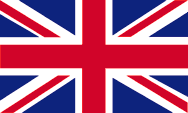

- Republik Kapverden
- präsidiale Republik
- Eigenbezeichnung: República de Cabo Verde
• Flagge
• historische Flaggen
• Bedeutung/Ursprung der Flagge
• Wappen
• Bedeutung/Ursprung des Wappens
• Landkarte
• Zahlen und Fakten
• Geschichte
• Ursprung des Landesnamens
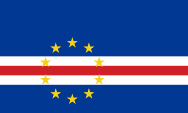
Nationalflagge,
Seitenverhältnis = 3:5,
Quelle, nach: Drawn by User:SKopp [Public domain],
via Wikimedia Commons






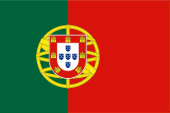
1911–1975,
Nationalflagge Portugals,
Seitenverhältnis = 2:3,
Quelle, nach:
Corel Draw 4





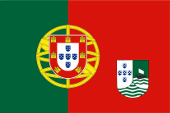
60-er Jahre 19. Jahrhundert,
geplante Flagge für Kapverden,
Seitenverhältnis = 2:3,
Quelle, nach:
Wikipedia (DE)



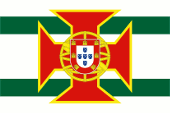
1935–1975,
Flagge des Generalgouverneurs,
Seitenverhältnis = 2:3,
Quelle, nach:
Die Welt im bunten Flaggenbild



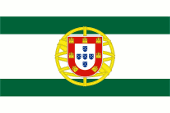
bis 1935,
Flagge eines Oberkommissars,
Seitenverhältnis = 2:3,
Quelle, nach:
Flaggenbuch 1939



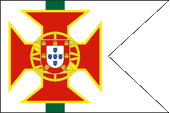
1935–1961,
Flagge eines Distriktskommandanten,
Seitenverhältnis = 2:3,
Quelle, nach:
Flaggenbuch 1939



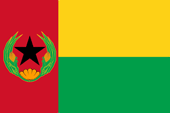
1975–1992,
Nationalflagge,
Seitenverhältnis = 2:3,
Quelle, nach: Editor at Large, Waldir,
Public domain, via Wikimedia Commons






Die heutige Flagge der Kapverden wurde am 25.09.1992 eingeführt. Sie zeigt ein einfarbiges dunkelblaues Flaggentuch. Die untere Hälfte der Flagge wird durch drei schmale Streifen in Weiß, Rot und Weiß ergänzt. In der linken Flaggenhälfte – mittig über dem weiß-rot-weißen Streifen – ein Kreis aus zehn gelben Sternen. Das Blau steht für den Atlantischen Ozean, der die Inselgruppe umgibt. Die zehn Sterne stehen für die zehn Inseln, aus denen die Kapverden bestehen, und der rot-weiße Streifen stellt die "Straße des Fortschritts" dar. Die Einführung der heutigen Flagge bedeutete für die Kapverden offenbar der Abschied von den gemeinsamen sozialistischen Idealen, die die Kapverden mit Guinea-Bissau verbanden, ebenso der Abschied von den Ideen des Panafrikanismus, da die panafrikanischen Farben nicht mehr verwendet werden. Die neue kapverdische Flagge trägt ein europäisches Design. Die Farben der Flagge sind wie folgt festegelgt: Blau = Pantone 287, Rot = Pantone 186, Gelb = Pantone 116. Die vorhergehende grün-gelb-rote Flagge wurde am 05.07.1975 – der Tag der Unabhängigkeit – erstmals gehisst. Sie enthielt die panafrikanischen Farben (Rot, Gelb und Grün). Sie zeigte im senkrechten roten Streifen am Mast ein Emblem (nicht das Staatswappen) mit einem fünfstrahligem schwarzem Stern, eingefasst von Maispflanzen und Jakobsmuschel. Der Stern symbolisierte die Unabhängigkeit des schwarzafrikanischen Staates. Diese Flagge unterschied sich von derjenigen Guinea-Bissaus durch ihre Proportionen (3:2 statt 2:1) sowie durch die Maispflanzen und die Jakobsmuschel. Diese Flagge der Kapverden basierte auf der Flagge der PAIGCV-Partei, die 1961 entstand. Deren Flagge zeigte den schwarzen Stern der afrikanischen Freiheit (und war damit offensichtlich von der Flagge Ghanas beeinflusst) und die Initialen der Partei. Die Farbkombination von Grün, Gelb und Rot sind die panafrikanischen Farben: Etwa 1900 setzte die Panafrika-Bewegung ein, die Gemeinsamkeiten aller Menschen mit schwarzer Hautfarbe hervorheben wollte. Für die politische Einheit Afrikas steht der Farbendreiklang Grün-Gelb-Rot, den viele afrikanische Staaten nach Erlangung ihrer Unabhängigkeit in ihre Flaggen übernahmen. Das erste Land war Ghana im Jahr 1957. Als Ursprung gelten die Landesfarben von Athiopien (Abessinien), dem ältesten unabhängigen Staat Afrikas. In der Zeit als portugiesische Kolonie wurde ausschließlich die portugiesische Nationalflagge verwendet, da man die Kolonien als fester Bestandteil des Mutterlandes betrachtete, und nicht als Außenbesitzungen. Das bedeutete, das portugiesische Kolonien nie eigene Flaggen hatten, auch wenn es in den sechziger Jahren des 20. Jahrhunderts Bestrebungen gab Flaggen für die Kolonien einzuführen, indem man das Wappen der Kolonie in das fliegende Ende der portugiesischen Nationalflagge platzierte. Diese Pläne wurden jedoch nie realisiert.
Quelle:
Nationalflaggen der Welt,
Flaggen Wappen Hymnen,
Die Welt der Flaggen,
Volker Preuß,
Wikipedia (EN)

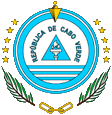
seit 1992,
Wappen der Kapverden,
Quelle, nach:
Wikipedia (D)

1974–1992,
Wappen der Kapverden,
Quelle, nach:
Corel Draw 4

1935–1975,
Wappen der Kapverden,
Quelle, nach:
Wikipedia (D)

Das Wappen der Kapverden, welches anlässlich der Unabhängigkeit am 05.07.1975 angenommen wurde, zeigte eine rote Scheibe, auf ihr links und rechts je eine Maispflanze, unterhalb eine Jakobsmuschel. In der Mitte ein goldener Kreis mit einer Hacke, einem Zahnrad, einem aufgeschlagenen Buch und dem schwarzen Stern, dem Leitstern der afrikanischen Freiheit. Der Mais stand für das wichtigste Agrarprodukt des Landes, und sollte die Bedeutung der Landwirtschaft unterstreichen. Die Jakobsmuschel stand für die Bedeutung des Meeres für die Inseln, hatte aber auch einen christlichen Hintergrund. Die Hacke stand für die Bauern, das Zahnrad für die Arbeiter und das Buch für die Intellektuellen. In dem goldenen Kreis das damalige Motto des Landes in portugiesischer Sprache: "Unidade, Trabalho, Progresso" → "Einheit, Arbeit, Fortschritt". Im Zuge der allmählichen Demokratisierung wurde am 25.09.1992 neben einer neuen Staatsflagge auch ein neues Wappen angenommen. Es zeigt einen hellblauen Kreis, im unteren Teil ergänzt durch drei hellblaue horizontale Streifen. In der Mitte des Kreises ein gleichschenkliges hellblaues Dreieck (Symbol der Gleichheit) mit einer silbernen Fackel (Symbol der Freiheit), umgeben vom Namen des Staates in portugiesischer Sprache. Ganz oben ein Lot (Symbol für die Gerechtigkeit), links und rechts insgesamt zehn goldene Sterne (die einzelnen Inseln der Kapverden), und unterhalb zwei Palmwedel (Siegeszeichen) und drei Kettenglieder (Symbole des Zusammenhalts). Im Jahre 1935 wurden für die portugiesischen Kolonien eigene Wappen eingeführt. Die Gestaltung unterlag einem gewissen Schema und so zeigte jedes Wappen neben einer lokalen Symbolik die fünf Quinas aus dem Wappen von Portugal und fünf grüne Wellen auf Silber. Als lokale Symbolik erschien im Wappen der Kapverden eine Karavelle.
Quelle:
Nationalflaggen der Welt,
Flaggen Wappen Hymnen,
Die Welt der Flaggen,
Volker Preuß

Lage:
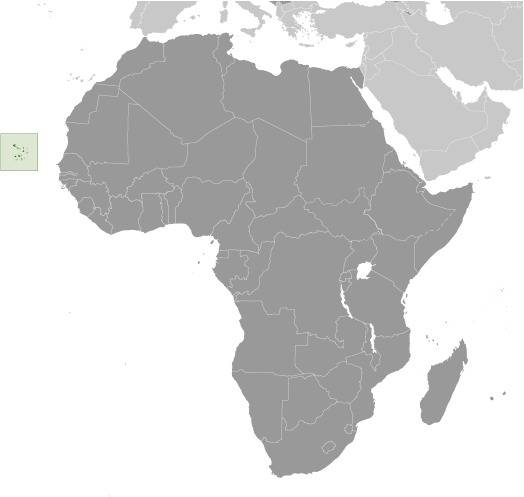
Quelle/Source: CIA World Factbook
Landkarte des Landes:
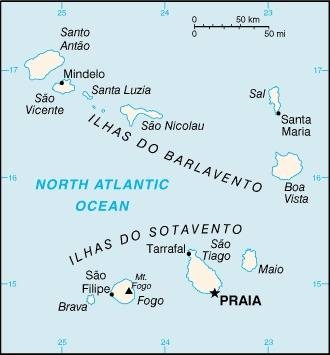
Quelle/Source: CIA World Factbook

Fläche: 4.033 km²
Einwohner: 483.628 (2021), davon 71% Creolen (Mulatten), 28% Afrikaner, 1% Europäer (meist Portugiesen)
Religionen: 77% Katholiken, 5% Protestanten, 2% Moslems, 11% Nicht-Religiöse
Bevölkerungsdichte: 120 Ew./km²
Hauptstadt: Praia, 127.524 Ew. (2009)
Amtssprache: Portugiesisch
sonstige Sprachen: kreolisches Portugiesisch
Währung: 1 Kapverden-Escudo (CVE, CVEsc) = 100 Centavos
Zeitzone: MEZ – 2 h
Quelle:
Wikipedia (D),
CIA World Factbook

1445 · Entdeckung durch den Portugiesen Diego Gomes
1460 · Besiedlung der Inseln
1495 · die Kapverden werden portugiesische Kolonie
1585 · der englische Pirat Francis Drake plündert die Hafenstadt Ribeira Grande
1592 · der englische Pirat Francis Drake plündert die Hafenstadt Ribeira Grande erneut
1876 · Verbot des Sklavenhandels
1951 · die Inseln erhalten den Status einer portugiesischen überseeischen Provinz
1961 · Gründung der PAIGCV-Partei, Beginn des Kampfes um die Unabhängigkeit von Kapverden und Guinea-Bissau
10.09.1974 · Guinea-Bissau wird unabhängig
05.07.1975 · Portugal gewährt den Kapverden die Unabhängigkeit
1981 · neue Verfassung, endgültige Trennung von Guinea-Bissau
1990 · Einführung des Mehrparteiensystems
Quelle:
Atlas zur Geschichte,
Discovery '97,
Weltgeschichte,
Wikipedia (D)

Der Name des Landes leites sich vom Cap Vert her ("Grünes Kap"), was die westlichste Landspitze des afrikanischen Kontinents ist. Die Inselgruppe der Kapverden selbst liegt noch einmal ca. 600 km in westlicher Richtung im Atlantischen Ozean.
Quelle:
Volker Preuß


![]()





















